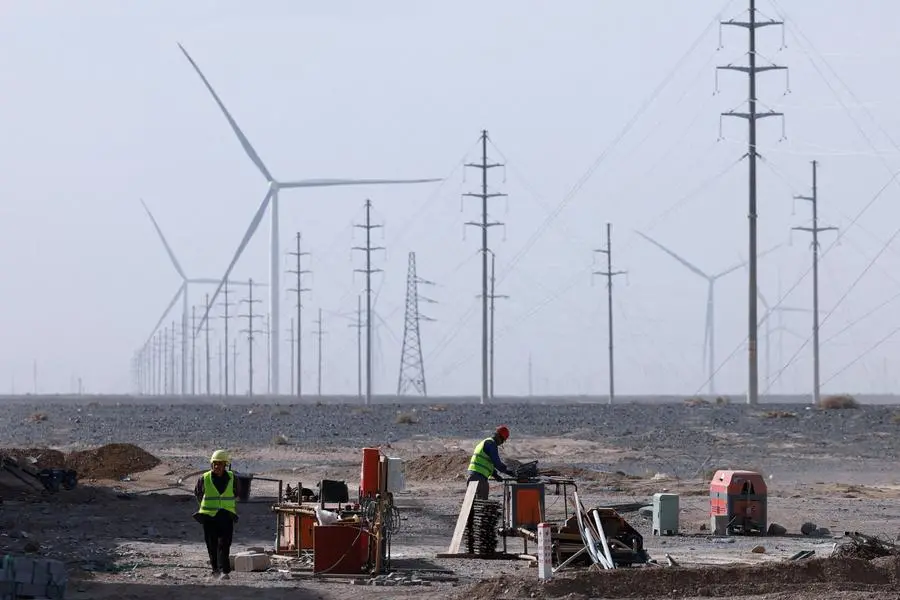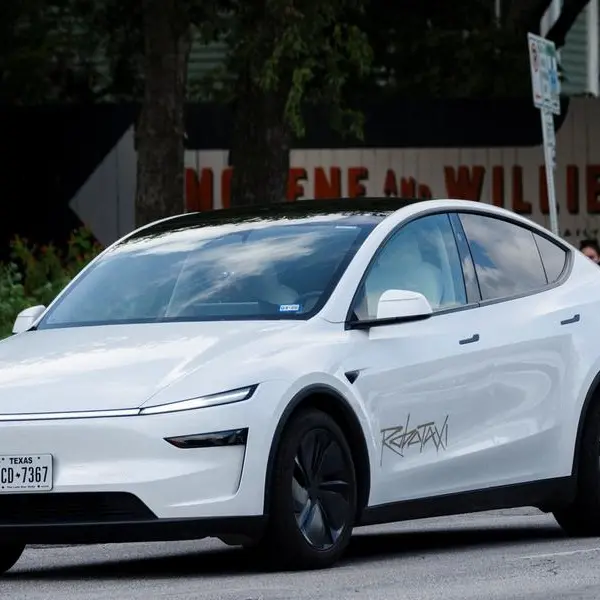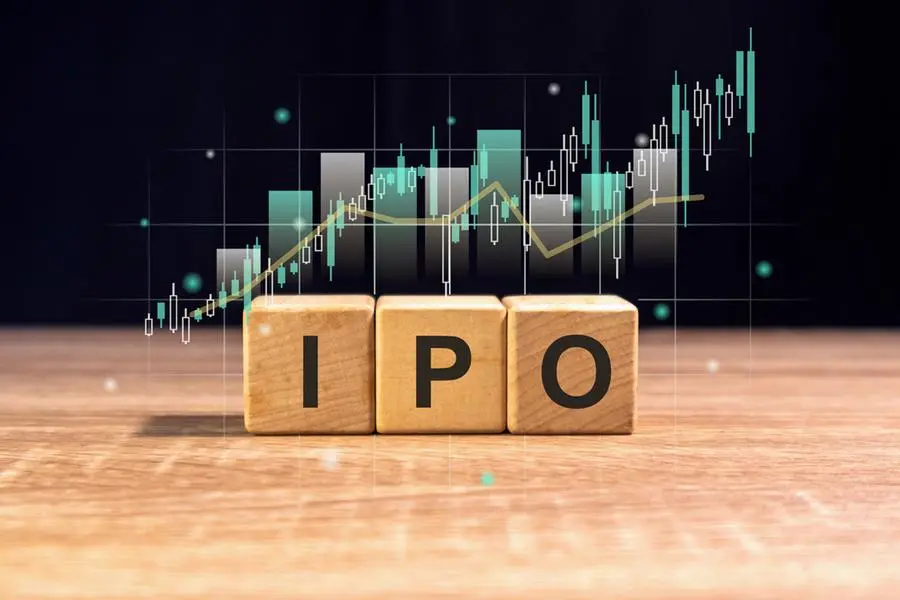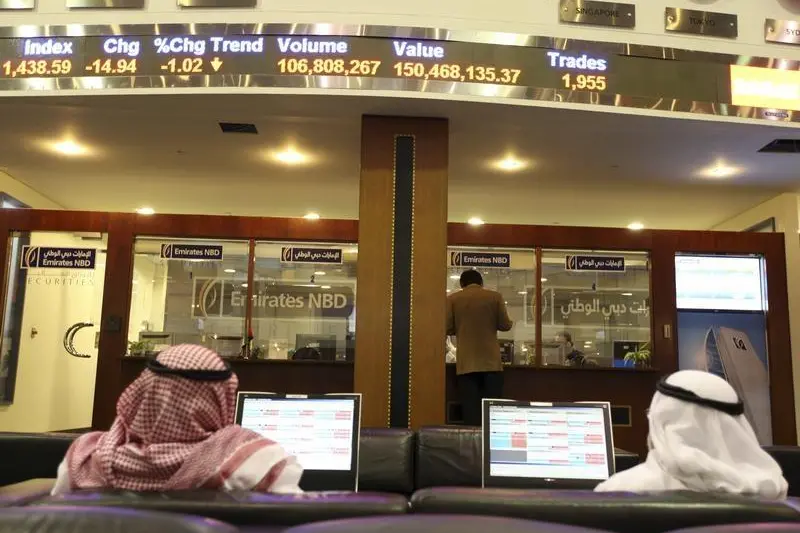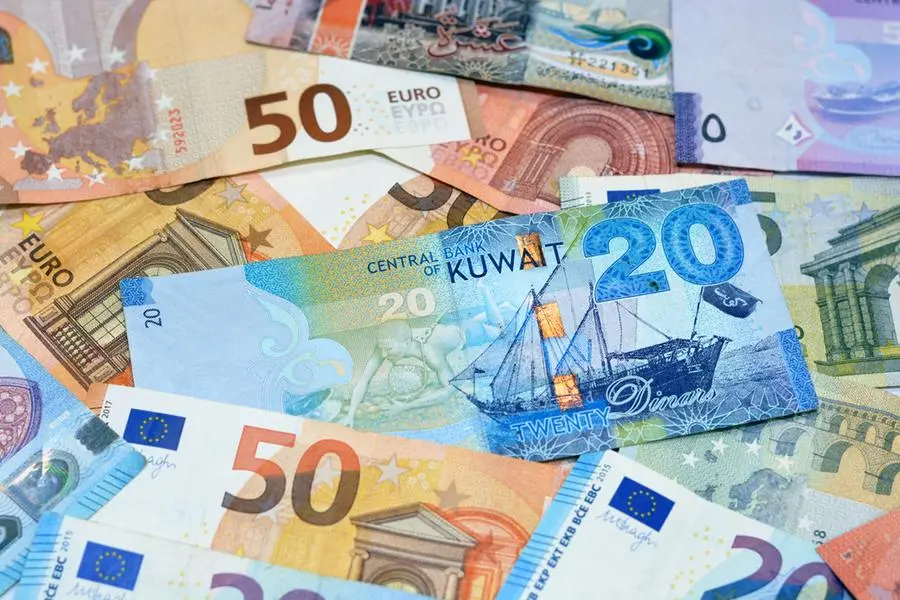PHOTO
FILE PHOTO: Workers at a construction site at a Taiyuan New Energy Co wind farm, during an organised media tour in Jiuquan, Gansu province, China October 17, 2024. REUTERS/Tingshu Wang.
(The views expressed here are those of the author, a columnist for Reuters.)
LAUNCESTON, Australia - The current problem with the economic data out of China is that there is something for everybody.
Want to see a bearish picture and show the world's second-biggest economy is suffering from both the trade war with the United States and its long-running pandemic hangover?
Look no further than slowing factory output in April, a negative reading on the key manufacturing index, weak property prices and investment, soft retail sales and lacklustre growth in electricity generation.
But if a more bullish outlook is sought, then resilient iron ore imports, recovering crude oil arrivals, surging installations of renewable energy and strong electric vehicle production are available as evidence.
The simplistic view would be to say that China is presenting mixed signals currently, and the full impact of the trade war and the subsequent pause of the worst of tariffs, have yet to be felt.
But perhaps a deeper understanding of the current state of China's economy and its outlook can be reached by working out which of the indicators are more important and a reflection of the driving forces of growth.
Take electricity generation as an example. It should be one of the best indicators of the economy as it shows in real time just how much power is being used, and there is a strong correlation between electricity demand and economic growth.
Total power generation rose 0.9% in April to 711.1 billion kilowatt hours (kWh), a deceleration from the 1.8% growth rate in March, according to data released on Monday by the National Bureau of Statistics (NBS).
For the first four months of the year, power generation was up a mere 0.1% to 2.98 trillion kWh.
The raw numbers suggest China's economy isn't performing well and the easing of the growth rate in April further points to weakness in the manufacturing sector, which makes up nearly two-thirds of power demand.
But delving into the detail shows quite a different picture.
The most important factor is that the official data excludes small-scale generators, as it only counts companies with at least 20 million yuan ($2.8 million) of annual revenue.
It also excludes residential rooftop solar, a sector that has been surging, with data from research firm Rystad Energy showing a record 36 gigawatts (GW) of capacity added in the first quarter of this year.
Rystad also said it expects the second quarter to be even stronger, with a potential 94 GW to be added to homes and businesses.
The rapid addition of small-scale rooftop generation means there is now a substantial gap between the NBS generation data and the power consumption figures from the National Energy Administration (NEA).
For example, NEA data showed power consumption rose 4.8% in March, while NBS figures showed only 1.8% output growth.
Electricity generation in the early months of 2025 was also likely lower than usual because of a relatively mild winter, which trimmed power demand for heating.
Put together the surge in rooftop solar and the warmer-than-usual winter and suddenly the modest growth in official electricity generation doesn't look that weak at all.
MANUFACTURING
The surge in renewable generation also helps another part of the economy, namely manufacturing.
While China's manufacturing is still export-orientated, the increasing emphasis on electrifying the economy means strong growth in sectors such as solar panels, wind turbines, batteries and electric vehicles.
That's part of the reason why China's industrial output rose 6.1% in April from a year earlier, even though the growth rate slowed from 7.7% in March.
Like much of China's recent data there are two ways of looking at the factory production numbers.
The 6.6% rise in April shows resilience in the face of U.S. tariffs, which reached 145% before the truce reached earlier this month saw them drop to 30% for a 90-day period to allow for talks.
Or the slowing of the growth rate in April shows China's manufacturing is starting to struggle and feel the adverse impact of the trade war.
The only safe conclusion is that there is still a high degree of uncertainty about China's outlook.
The views expressed here are those of the author, a columnist for Reuters.
(Editing by Jamie Freed)
